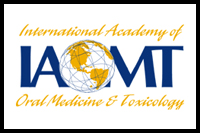
Vas Aposhian (Aposhian, 1992 ) documented the fact , now universally accepted by the scientific community, that dental amalgam fillings contribute the majority of mercury body burden in the general population. These findings have been corroborated by other research including human cadaver studies.
Further, it is well known that when mercury from amalgam passes to the cord blood, it will reach the fetus and accumulate there.
Boyd Haley PhD
Boyd Haley PhD quantitatively measured mercury release from dental amalgams ranging from 4 – 22 micrograms/cm2 per day – “without galvanism, excess heat or pressure from chewing – all factors that increase mercury release from amalgams in the mouth”. This study was done using very small single-spill fillings in a sealed container.
These measurements showed that mercury release from amalgams vastly exceed the ʻestimatedʼ release reported by ADA ‘authority’ Rodney Mackert, DDS, who claimed that 7 fillings release only a single microgram of mercury per day – according to a Wall Street Journal article. It is important to note that Mackert, rather than directly measuring the actual quantity of mercury released by amalgams, instead “estimated” the amount of mercury released from amalgam fillings by looking at the mercury level in the urine of several test subjects. Mackert has no training in toxicology as he is a practicing dental materials expert.
It is well established that less than 10% of mercury leaves the body by the kidney/urinary route (the vast majority leaving by the bilary transport/fecal route). As a result of this flawed methodology the ADA estimated level of mercury release by amalgam grossly understates the amount of the mercury released.
A study done by Dr. David Quig of Doctorʼs Data showed that an average of 60 micrograms are excreted daily in the feces of the average amalgam bearer. Therefore, if only 1 microgram were excreted by the required 7 amalgams, as suggested by Mackert and the ADA, to reach this average fecal excretion rate a person would have to have 420 amalgams.
It is important to note that the ADA spokespersons base their opinion on amalgam safety based totally on mercury levels in the blood, urine or hair. Recent science has shown that these are not measures of total exposure or body burden but likely represent a combination of exposure and the excretion ability of the individual.

Vasken Aposhian, PhD, Professor Emeritus of Pharmacology and Professor Emeritus of Cellular and Molecular Biology, University of Arizona, College of Medicine.
Maths Berlin, MD, PhD, (Advisor to the IAOMT Scientific Advisory Board) Professor Emeritus of Environmental Medicine, Medical Faculty University of Lund, Sweden; Chairman of two World Health Organization conferences on mercury exposure in 1991.
Thomas Burbacher, PhD , Associate Professor of Environmental and Occupational Health Sciences; Research Affiliate, Center on Human Development and Disability; Director, Infant Primate Research Laboratory , University of Washington Center for Human Development and Disability.
Louis W. Chang, PhD, Emeritus Professor of Pathology, University of Arkansas School of Medical Sciences; Founding Director of the Taiwan Division of Environmental Health & Occupational Medicine.
Boyd Haley, PhD, MIAOMT, (Chairman SAB IAOMT), Professor and former Chairman of the Department of Chemistry, University of Kentucky.Herb Needleman, MD, Professor of Child Psychiatry and Pediatrics, University of Pittsburgh School of Medicine.
